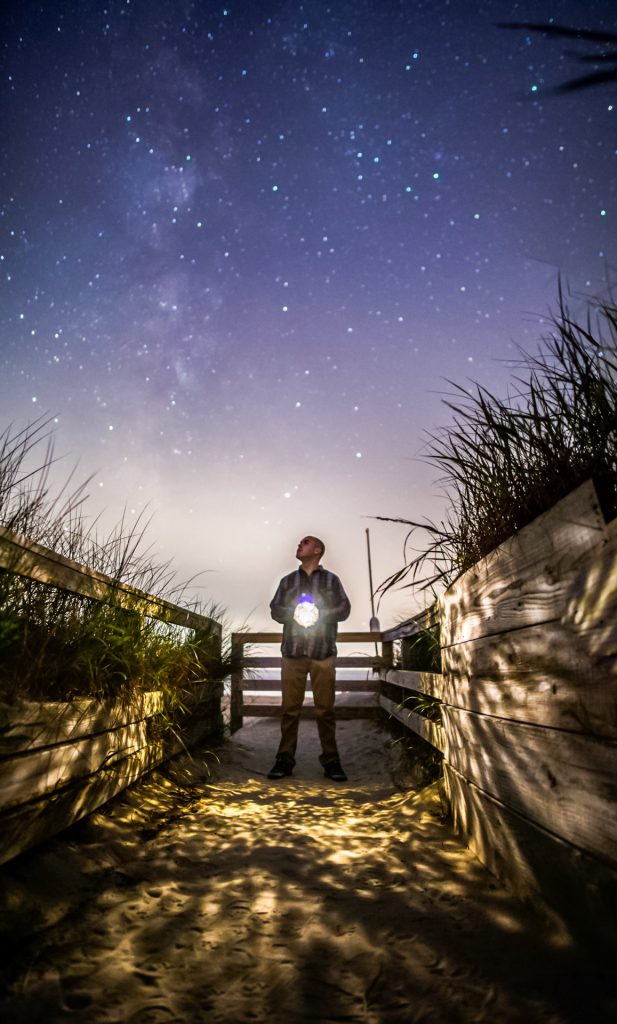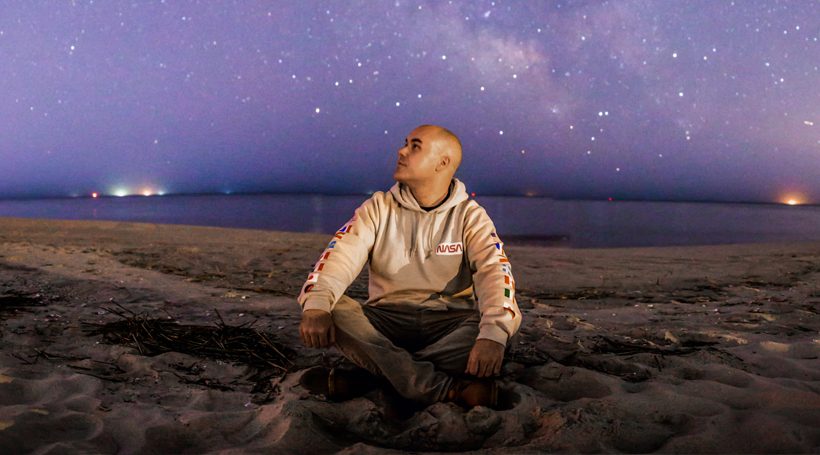Photos by Chris Bakley
If you’re searching for a distraction from the pandemic raging across the Earth, Chris Bakley suggests you look to the sky. When the galaxy is especially fascinating, Bakley gathers stargazers (at first in-person, but now virtually) to observe and teach about out-of-this-world moments in space. A freelance photojournalist, Bakley, 27, has spent the past 10 years taking breathtaking photos of celestial South Jersey. He’s now turning others on to the wonders of outer space.
Q: What was it about the sky that first captivated you?
Ever since I was a kid, I’d look to the sky and wonder what was out there. It’s the same feeling you get when you’re looking over the ocean to the horizon, knowing there are a million things that no one has discovered.
Q: How did you get started with astrophotography?
When I was 18, NASA shot 5 rockets at once that released chemicals into the atmosphere that glowed in the dark. At the time, I owned a cheap $40 camera, and I went out to capture it just for fun. The pictures weren’t great, but I was hooked.
Q: How did it evolve from there?
I don’t have a photography or astronomy degree – I taught myself through trial and error. As I shared my photos of the night sky or meteor showers over the Cape May coast on social media, people started to ask how they can see the sky the way I do with my camera. I started hosting free community stargazing and moon gazing events. After 6 years, they started to attract up to a few hundred people each night.
Q: How have these events changed since Covid?
I’ve been really leaning into my social media, hosting live streams for rocket launches, satellite launches and meteor showers. Sometimes I record the footage myself from my backyard, and sometimes I get press credentials to broadcast the U.S. Space Force’s live stream on my Facebook. Between the Covid outbreak and the latest launches from the U.S. Space Force and SpaceX – the first private company to send astronauts to space – people have been more interested than ever. You can find a lot of wonder and hope when you look at the night sky or watch a rocket launch into space. There’s a sense that there’s something bigger in the universe than the hard times we’re dealing with on Earth. I think people need that right now.
Q: You are a NASA Solar System Ambassador. What does that mean?
It’s a volunteer program, and my main focus is to educate people about NASA’s missions and discoveries, and to get kids interested in science and technology. The program gives me access to incredible resources to teach with so I can reach a wider audience.
Q: Is there an experience in space that stands out?
August 21, 2017 was the Great American Eclipse. You couldn’t see it without special glasses, so I walked around the Shore handing out a couple hundred pairs that I had bought myself. I set up all my photography equipment – a Canon 1DX, which is much more advanced than the $40 camera I started with – and set up a TV so people around me could see what I saw through my lens. For so many people, especially young kids, it was the first solar eclipse they had ever seen. The look on their faces was incredible. It was the same look I had watching those 5 rockets launch all those years ago.

Chris Bakley
Q: How can we get better photos of the sky with our cameras?
You don’t need a fancy camera to capture an amazing shot. The key is to use a long exposure, which means you’re capturing the image over a longer period of time. So when you’re looking at a star, you’re seeing it in real time. But when you capture that same light over 25 seconds, and the light builds on itself after every second, you see things you couldn’t see with just your eye. You can learn for free on YouTube or blogs. It takes time and practice – looking at my social media pages, you’d think I never fail. But the hundreds of blurry photos on my memory card tell a different story.
Q. Are there any astro-events coming up?
There’s a meteor shower that peaks on November 17 and 18 called the Leonids meteor shower that can produce upwards of 10-15 meteors an hour. I recommend looking towards the darkest portion of your sky right after sunset. The peak may not be as high, but all it takes is one meteor to make your entire night.














